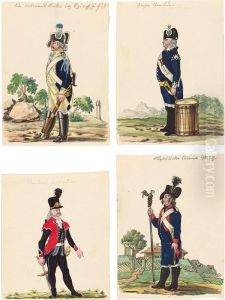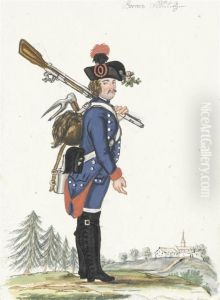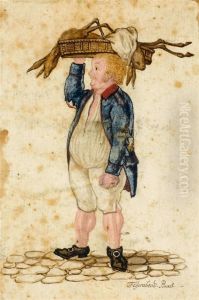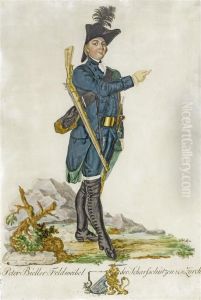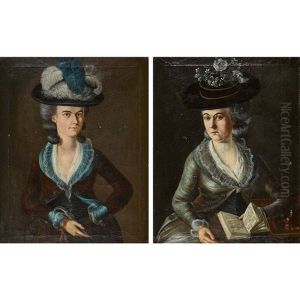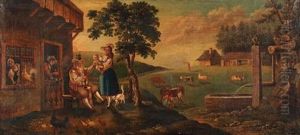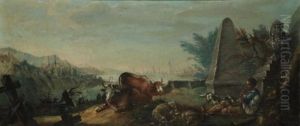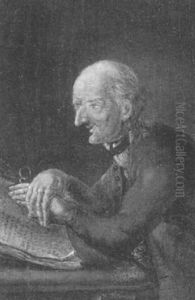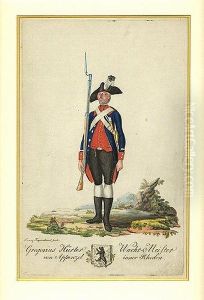Franz Feyerabend Paintings
Franz Feyerabend was a Swiss painter and engraver born on August 18, 1755, in Basel, Switzerland. He was an artist of some repute in his time, known for his landscapes, portraits, and genre scenes. Feyerabend's work was characteristic of the late 18th-century European artistic movements, reflecting elements of the Baroque and the burgeoning Romanticism.
Feyerabend trained under the Swiss painter Christian von Mechel, who was a notable engraver and art dealer of his time. Under von Mechel's tutelage, Feyerabend honed his skills in both painting and engraving. He developed a keen eye for detail and a delicate hand in his engravings, which would become highly regarded.
He spent a significant part of his career in Basel, where he contributed to the local art scene. Feyerabend's engravings often depicted landscapes and cityscapes of his homeland, capturing the scenic beauty of the Swiss environment with a romantic touch. His landscapes were appreciated for their atmospheric qualities and the way he manipulated light and shadow to create depth and interest.
Feyerabend's portraits showcased his ability to capture the likeness and character of his subjects. He had a talent for portraying the fashions and sensibilities of the Swiss bourgeoisie and was skilled in communicating the social status and personality of his sitters through his work.
Apart from his artistic endeavors, Feyerabend was also involved in various cultural and intellectual circles in Basel. He was part of a milieu that valued the arts and the exchange of ideas, which was typical of the Enlightenment period in Europe.
Tragically, Feyerabend's life was cut short when he died on September 11, 1800, at the age of 45. Despite his relatively short career, he left behind a body of work that continues to be studied and appreciated for its contribution to Swiss art of the period. His engravings, in particular, remain a valuable historical record of the Swiss landscape and society at the turn of the 19th century.
